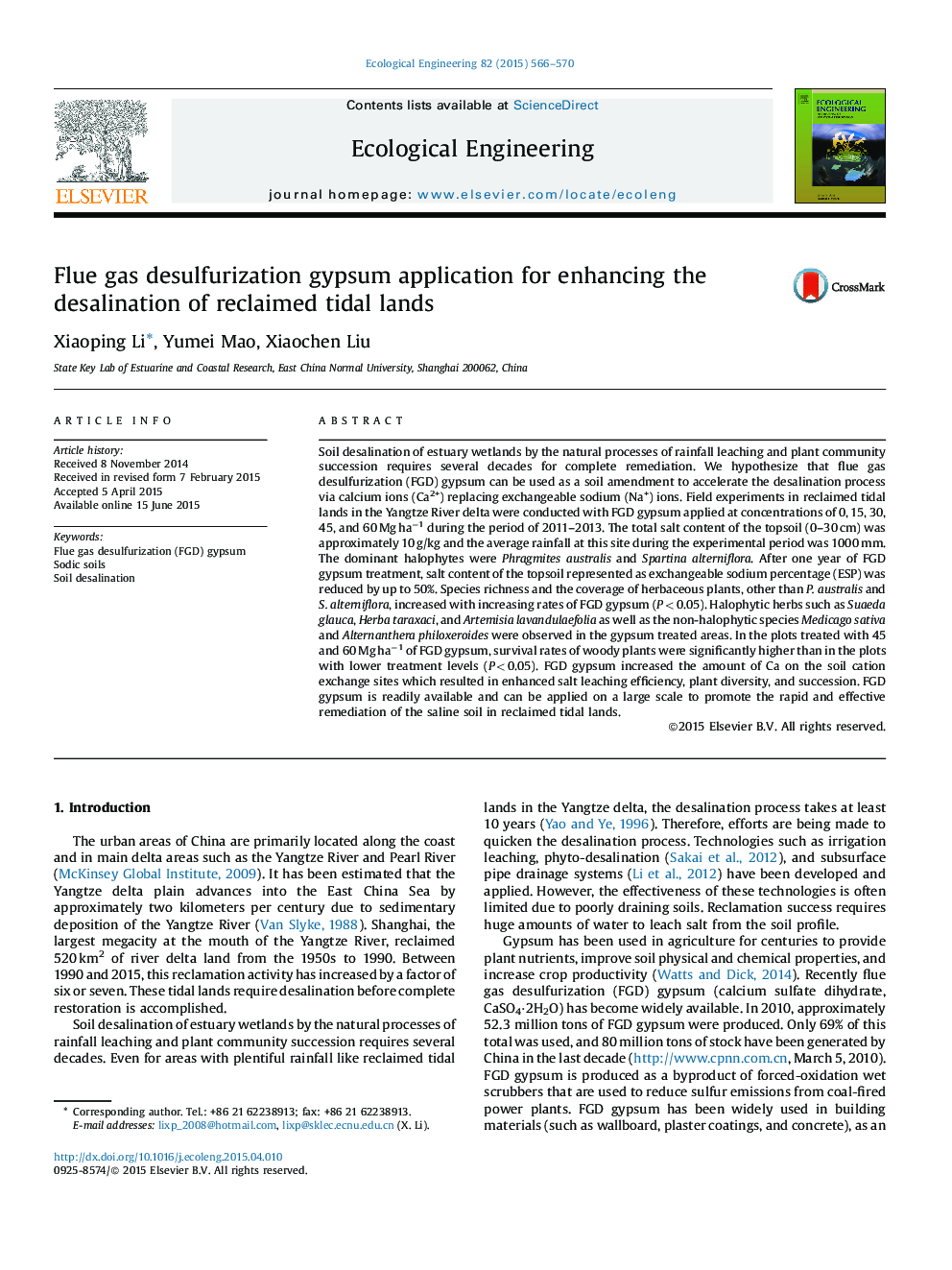| کد مقاله | کد نشریه | سال انتشار | مقاله انگلیسی | نسخه تمام متن |
|---|---|---|---|---|
| 4389008 | 1618017 | 2015 | 5 صفحه PDF | دانلود رایگان |
• FGD gypsum is an available and ecologically safe material for remediation of reclaimed tidal lands.
• Soil ESP values decreased by more than 50% after FGD gypsum additions within 2 years.
• The natural process of desalination by rainfall can be accelerated to more than double the base rate.
• Vegetation succession will be promoted at higher FGD gypsum applications.
Soil desalination of estuary wetlands by the natural processes of rainfall leaching and plant community succession requires several decades for complete remediation. We hypothesize that flue gas desulfurization (FGD) gypsum can be used as a soil amendment to accelerate the desalination process via calcium ions (Ca2+) replacing exchangeable sodium (Na+) ions. Field experiments in reclaimed tidal lands in the Yangtze River delta were conducted with FGD gypsum applied at concentrations of 0, 15, 30, 45, and 60 Mg ha−1 during the period of 2011–2013. The total salt content of the topsoil (0–30 cm) was approximately 10 g/kg and the average rainfall at this site during the experimental period was 1000 mm. The dominant halophytes were Phragmites australis and Spartina alterniflora. After one year of FGD gypsum treatment, salt content of the topsoil represented as exchangeable sodium percentage (ESP) was reduced by up to 50%. Species richness and the coverage of herbaceous plants, other than P. australis and S. alterniflora, increased with increasing rates of FGD gypsum (P < 0.05). Halophytic herbs such as Suaeda glauca, Herba taraxaci, and Artemisia lavandulaefolia as well as the non-halophytic species Medicago sativa and Alternanthera philoxeroides were observed in the gypsum treated areas. In the plots treated with 45 and 60 Mg ha−1 of FGD gypsum, survival rates of woody plants were significantly higher than in the plots with lower treatment levels (P < 0.05). FGD gypsum increased the amount of Ca on the soil cation exchange sites which resulted in enhanced salt leaching efficiency, plant diversity, and succession. FGD gypsum is readily available and can be applied on a large scale to promote the rapid and effective remediation of the saline soil in reclaimed tidal lands.
Journal: Ecological Engineering - Volume 82, September 2015, Pages 566–570
